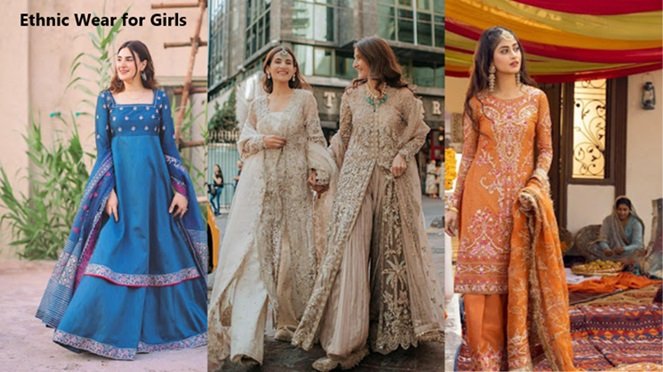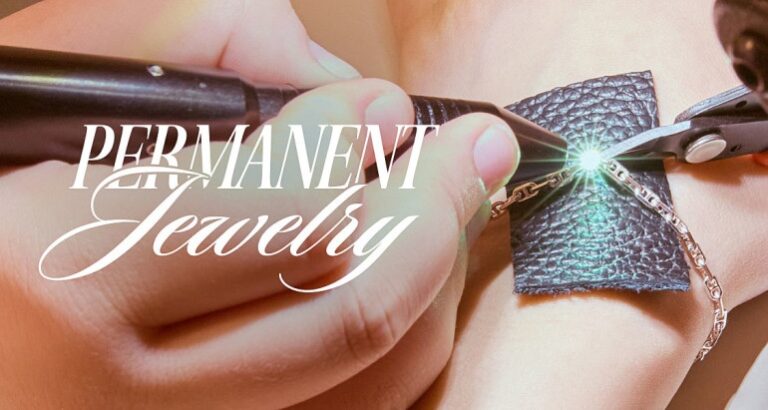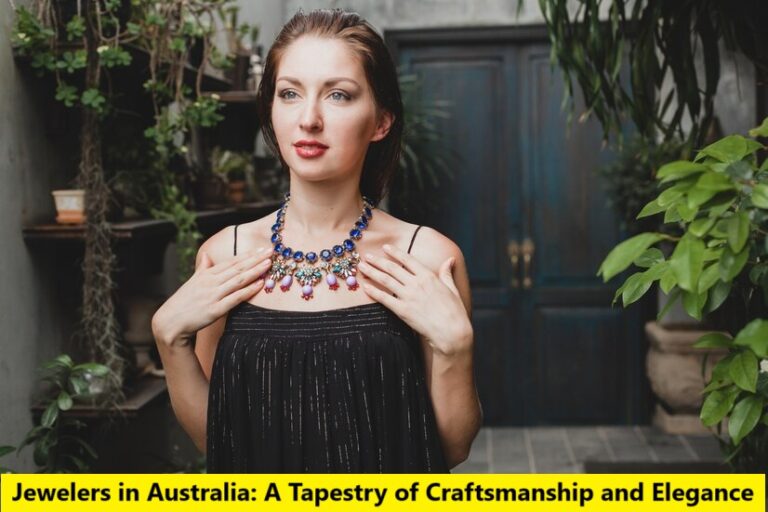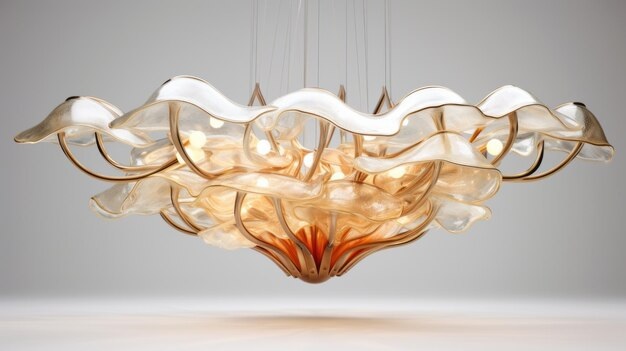
Ethnic Wear for Girls
Introduction
Ethnic wear is more than just clothing; it celebrates cultural heritage, timeless fashion, and the art of tradition. From vibrant festivals to elegant weddings, ethnic wear provides a perfect outfit for every occasion. If you want to explore how ethnic wear can make any girl stand out, this guide is here to help. We’ll dive into various styles, offer styling tips, and share insights on choosing the perfect Ethnic Wear for Girls.
Understanding Ethnic Wear
Ethnic wear refers to traditional clothing styles that are deeply rooted in cultural heritage. For girls, ethnic wear spans a range of garments like salwar kameez, lehenga choli, sarees, and more. Despite the rise of Western fashion, ethnic wear remains popular due to its versatility, beauty, and cultural significance.
Popular Types of Ethnic Wear for Girls
Salwar Kameez
The Salwar Kameez is a timeless outfit that blends comfort and elegance. With its origins in the Punjab region, this outfit typically includes a tunic (kameez), loose pants (salwar), and a scarf (dupatta). Whether it’s for a casual family gathering or a more formal event, the Salwar Kameez is a flexible option that suits all settings.
Lehenga Choli
Lehenga Choli outfits are perfect for weddings, festivals, and other celebrations. This traditional outfit consists of a long skirt (lehenga), a blouse (choli), and a dupatta. With intricate designs, embroidery, and embellishments, Lehenga Cholis bring a sense of grandeur, making any girl feel like royalty.
Anarkali Suits
Anarkali suits have made a resurgence in recent years. Characterized by a long, flowing kurta that flares out, this outfit is elegant and graceful. Anarkali suits are great for formal occasions like weddings or religious ceremonies, where their regal style truly shines.
Saree and Half-Saree
The saree is a classic garment worn by draping a long piece of fabric around the body, with one end draped over the shoulder. Half-sarees are a modern take, usually involving a lehenga, a blouse, and a dupatta draped in saree style. They offer a youthful twist on traditional sarees and are perfect for young girls attending festive occasions.
Kurti and Palazzo Sets
A Kurti paired with palazzo pants creates a modern, relaxed ethnic look. This outfit is ideal for semi-formal gatherings and casual outings, offering both style and comfort. Girls can experiment with different lengths, prints, and fabric choices to keep it versatile.
Ghagra and Chaniya Choli
Ghagra and Chaniya Choli outfits are popular in regional festivals like Navratri. These consist of a long skirt, a blouse, and a dupatta, often adorned with vibrant colors and mirror work. They’re ideal for festivals where girls can twirl and enjoy the cultural vibe.
Choosing Ethnic Wear Based on the Occasion
Festivals
Festivals are the perfect time to embrace traditional attire. Outfits like bright-colored lehengas for Diwali or beautifully embroidered salwar kameez for Eid allow girls to celebrate in style.
Weddings and Engagements
Weddings are a great opportunity for girls to wear heavier, more embellished outfits like Anarkali suits or Lehenga Cholis. For engagement ceremonies, lighter sarees or half-sarees can be equally stunning.
Family Gatherings
For smaller, family-oriented occasions, comfortable yet stylish options like Kurti and Palazzo sets or a simple Salwar Kameez work well. These outfits are perfect for mingling and enjoying the company of loved ones.
Formal Events and Parties
When attending a formal event, ethnic wear can make a memorable impression. Opt for elegant Anarkali suits or a richly designed Lehenga Choli. The goal is to find a balance between sophistication and style.
School and Cultural Events
For school functions, lighter ethnic wear like simple Salwar Kameez or a vibrant Kurti with leggings works best. These outfits are practical, comfortable, and appropriate for a young audience.
Timeless Fashion Tips for Ethnic Wear
Embrace Bright Colors and Patterns
Ethnic wear is all about celebrating colors and patterns. Whether it’s vibrant reds, royal blues, or floral prints, choosing the right color can bring the outfit to life.
Accessorize Thoughtfully
Accessories like bangles, earrings, and necklaces can elevate any ethnic outfit. However, it’s essential to strike a balance—too many accessories can overwhelm the look, while just the right amount can enhance it.
Focus on Fabric Choices
The fabric you choose can significantly affect both comfort and appearance. In summer, go for breathable fabrics like cotton or chiffon, while in winter, silk or velvet provides warmth and elegance.
Mixing Modern and Traditional Styles
Fusion fashion is a trend where ethnic wear meets contemporary styles. Think of pairing a Kurti with jeans or adding a stylish jacket to a lehenga. Fusion wear allows girls to experiment and create a unique style.
Selecting the Right Footwear
The right footwear can make or break an outfit. Juttis, mojaris, and sandals are popular choices that pair well with ethnic wear. Opt for footwear that complements the outfit without drawing too much attention.
Seasonal Styling Tips for Ethnic Wear
Summer Styles
Lightweight fabrics and airy designs work best in the heat. Cotton salwar kameez, chiffon sarees, or Kurti-palazzo sets are ideal choices for staying comfortable and stylish.
Winter Styles
In colder months, layering is key. Shawls, dupattas, and jackets can add warmth while enhancing the overall look. Velvet and silk are great fabric choices for winter ethnic wear.
Monsoon-Friendly Outfits
For the rainy season, choose fabrics that dry quickly, like polyester blends. Shorter lengths, like a knee-length Kurti, can help avoid muddy hems.
Trends in Ethnic Wear for Girls
Pastel Colors and Floral Prints
Pastels bring a fresh, youthful feel to ethnic wear. Floral prints, especially in sarees and Anarkali suits, add a feminine touch that’s both traditional and trendy.
Fusion Ethnic Wear
Fusion wear is all about incorporating modern elements into traditional outfits. Girls can experiment with asymmetric hemlines, cape-style dupattas, and contemporary cuts for a unique look.
Traditional Embroidery and Zari Work
Embroidery and zari work bring richness to ethnic outfits. Whether it’s phulkari from Punjab or chikankari from Lucknow, these styles continue to be popular for special occasions.
Accessorizing Ethnic Wear for a Complete Look
Jewelry Choices
Statement jewelry like jhumkas, necklaces, and bangles can add the perfect finishing touch. For a simpler outfit, bold jewelry can add character, while for heavier outfits, minimal jewelry works best.
Hair Accessories
Braids adorned with flowers or beads, along with bun clips, can beautifully complement ethnic wear. Hair accessories are a subtle way to add charm to the overall look.
Dupattas and Scarves
The dupatta is not only a staple but also a versatile accessory. Whether draped over one shoulder or used as a shawl, the dupatta can dramatically alter the outfit’s look.
Bags and Clutches
Ethnic wear pairs well with small, elegant bags like potlis or clutches. Choose a design that matches the outfit’s style and adds convenience without overwhelming the look.
Common Mistakes to Avoid in Ethnic Wear
Overdoing Accessories
While accessories add flair, over-accessorizing can take away from the outfit’s elegance. Stick to a few statement pieces to keep the look balanced.
Ignoring Comfort
Fashion is important, but comfort should not be overlooked. Choose fabrics and designs that allow for movement, especially for active events like weddings or festivals.
Mismatch of Colors and Fabrics
When mixing and matching, make sure colors and fabrics complement each other. Avoid clashing colors or mixing very heavy fabrics with lightweight ones.
Sustainable and Ethical Fashion Choices in Ethnic Wear
Opting for Handloom and Handmade Garments
Handloom and handmade garments support local artisans and reduce environmental impact. These options are not only beautiful but also contribute to sustainable fashion.
Upcycling and Reusing Ethnic Wear
Old ethnic wear can be transformed into new outfits. Upcycling an old saree into a lehenga or using leftover fabric for accessories adds creativity and sustainability to your wardrobe.
Renting vs. Buying
For one-time events, renting ethnic wear can be more economical and environmentally friendly. Renting also provides access to designer pieces without the high cost.
Ethnic Wear for Girls of Different Age Groups
Pre-teens and Young Girls
Ethnic wear for younger girls often includes simpler styles with vibrant colors. Choose lightweight fabrics and comfortable designs for active children.
Teenagers
Teenagers can experiment more with their style, incorporating trendy elements like crop tops with lehengas or kurti jackets. Comfort and style go hand-in-hand, so look for outfits that balance both.
Conclusion
Ethnic wear offers endless possibilities for girls, making it easy to find the perfect outfit for any occasion. By exploring different styles, mixing modern elements, and accessorizing thoughtfully, girls can create looks that are both beautiful and meaningful. Embrace the diversity and richness of ethnic wear to make every occasion a special one.
FAQs
- What are the best fabrics for summer ethnic wear?
Cotton, chiffon, and georgette are ideal for summer as they are lightweight and breathable. - Can ethnic wear be styled with Western accessories?
Absolutely! Pairing ethnic outfits with Western accessories like belts or sunglasses can create a trendy fusion look. - How can I make ethnic wear more comfortable for children?
Choose lightweight, breathable fabrics and avoid heavy embellishments. Ensure the outfit allows freedom of movement. - Are there fusion options for ethnic wear that are good for casual outings?
Yes, options like a Kurti with jeans or a tunic top with leggings offer a casual yet stylish fusion look. - How do I pick ethnic wear that suits my body type?
For a flattering look, consider your body shape and choose styles that enhance your natural silhouette. A-line kurtas and straight-cut suits work well for most body types.
Also, Read, Thesparkshop.in Clothing Men: Style, Quality, and Value.






